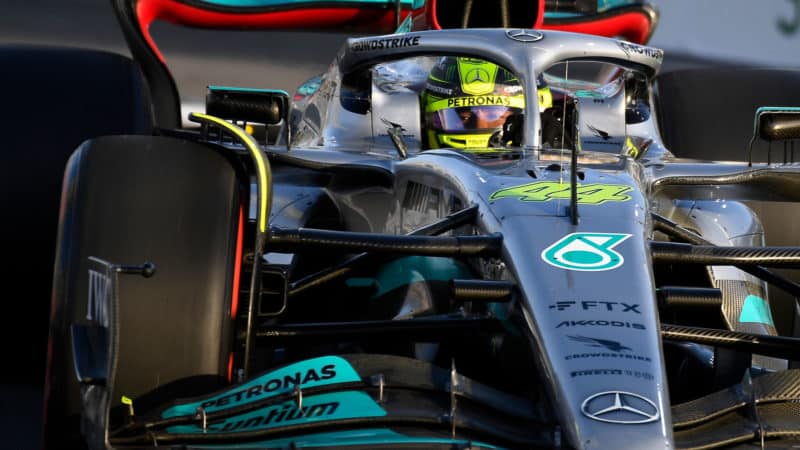The heart of the problem is the porpoising that all teams encountered from the start of the Barcelona test last month. Some soon found ways to dial it out or control it without compromising performance, or discovered what parameters turned it in on and off and thus worked out a development route to address it properly further down the line. Mercedes is by its own admission still floundering.
The fundamental issue is that the W13 was designed to work at an optimum ride height, and only by jacking it up does the porpoising go away and the car become driveable over a lap, never mind a race distance. And by doing that performance is compromised.
“The only way to run is to raise the car very high,” Russell explained. “And obviously with this ground effects car, we lose all of the downforce. So we know that if we can get the car on the ground, there’s a huge chunk of lap time there.
“So it’s all well and good saying that, but we can’t physically achieve that right now. We need to have a re-think.”
“Porpoising is something that caught all of the teams out when they first launched this generation of cars just a few weeks ago,” chief technical officer James Allison noted after Bahrain.
“The mechanisms that cause it, while not completely understood yet, are rather different from what the commentators are providing on the web and on your TV screens. How quickly each team can get on top of it and fix it is going to be quite an important thing for determining what the pecking order in the sport will be.
“We were caught out by it quite badly, especially when we put our first race upgrade package on in the last winter test, the amount of porpoising we saw has been quite extreme.

Russell: “We’re struggling to find that silver bullet to resolve our issues”
Grand Prix Photo
“We are having to throw away the basic performance of our car as a smaller problem, in order to get the bigger problem – the uncontrollable bouncing – slightly under our control.”
The team hoped to have a better handle on it in Jeddah, a very different type of track with a newer surface and fewer bumps than Bahrain, but that didn’t prove to be the case.
“I think we are not running the car where we wanted to run it,” team boss Toto Wolff noted. “And therefore it’s very difficult to really assess what the lap time deficit is if we were able to run the car lower. And I would very much hope that the gap is much closer to what we’ve seen today. But there’s deficits everywhere.”
In such difficult circumstances it’s normal for teams to roll the dice, split the cars and pursue different routes, and in Jeddah Hamilton side of the garage was less successful.





